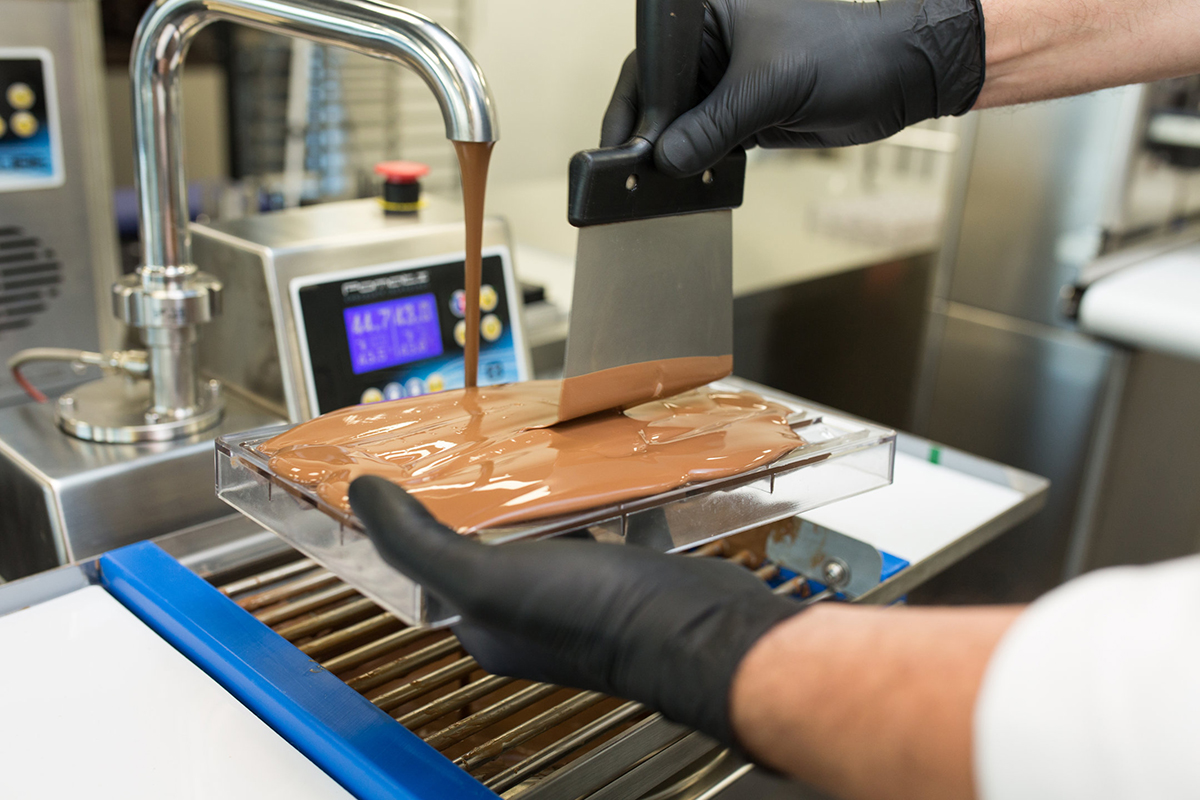What Are the Top 5 Food Safety Audit Software Tools Used by Large Australian Food Businesses?
Large Australian food businesses rely on five leading software platforms to maintain compliance with the Australia New Zealand Food Safety Code: Safe Food Pro, Ideagen Safefood 360°, Squizify, SC Training, and several other specialised solutions designed for enterprise-scale operations. These audit software providers in Australia deliver comprehensive digital ecosystems that transform manual compliance processes into automated, real-time monitoring systems.
The selection of appropriate food safety audit software depends on specific operational requirements, from continuous temperature monitoring to staff training integration. Each platform offers distinct advantages tailored to different aspects of food safety management, whether you need Bluetooth-enabled temperature tracking, comprehensive compliance documentation, or mobile-first training modules.
1. Safe Food Pro
Safe Food Pro stands out amongst audit software providers Australia for its practical approach to daily food safety operations. The platform addresses critical compliance requirements through technology-driven automation that reduces human error whilst maintaining detailed audit trails.
Core Features:
- Bluetooth Probe Integration: Real-time refrigeration temperature tracking automatically logs data and triggers alerts when temperatures deviate from safe ranges
- Scheduled Task Reminders: Automated notifications ensure cleaning schedules, equipment checks, and routine inspections occur on time
- PIN Signing System: Individual staff accountability through digital signatures that create verifiable records of who completed each task
- Corrective Action Management: Structured workflows guide teams through identifying, documenting, and resolving food safety issues with full traceability

Advantages:
The platform’s intuitive interface requires minimal training, making it accessible for frontline staff across multiple sites. Cloud-based accessibility means managers can monitor compliance across all locations simultaneously, whilst automated record-keeping eliminates paperwork and ensures audit readiness.
Limitations:
Safe Food Pro may require additional hardware investment for Bluetooth temperature probes. Some users report that customisation options can be limited compared to enterprise-level platforms, potentially requiring workarounds for highly specific operational workflows.
More about: Why Restaurant Food Safety Software Is Essential for Local Cafes and Chains
2. Ideagen Safefood 360°
What makes Ideagen Safefood 360° stand out among audit software providers in Australia?
Ideagen Safefood 360° delivers an enterprise-grade compliance platform designed specifically for large-scale food operations. The system centralises supplier management, HACCP documentation, incident tracking, and audit scheduling within a single interface, eliminating the need for multiple disconnected systems.
Key capabilities include:
- End-to-end traceability from raw materials through to finished products
- Automated compliance reporting aligned with FSANZ standards
- Document control systems that manage specifications, certificates, and audit records
- Risk assessment tools for identifying and mitigating food safety hazards
- Multi-site management capabilities for businesses operating across different locations
Strengths:
The platform’s depth makes it ideal for complex operations requiring comprehensive quality management systems. Integration with laboratory information management systems (LIMS) streamlines testing workflows.
Limitations:
Implementation requires significant time investment and staff training. The extensive feature set may overwhelm smaller teams, and pricing reflects its enterprise positioning, making it less accessible for mid-sized operations transitioning to digital systems.
3. Squizify
How does Squizify enhance continuous monitoring for large food operations?
Squizify stands out by seamlessly integrating with hardware sensors, allowing for automated monitoring of critical control points around the clock. The platform directly connects to temperature probes, humidity sensors, and other monitoring devices, eliminating the need for manual data entry while capturing real-time environmental conditions across multiple locations. This continuous flow of data feeds into centralised dashboards where managers can monitor compliance metrics, receive immediate alerts for any deviations, and access historical trends for regulatory reporting. For instance, its integration with pharmacy temperature monitoring systems can ensure that food products requiring specific temperature controls are kept within safe limits.
What are the advantages and limitations of Squizify?
Pros:
- Automated sensor integration reduces human error and labour costs
- Real-time alerts enable immediate corrective action before issues escalate
- Cloud-based system provides remote access to compliance data across facilities
- Comprehensive audit trails satisfy regulatory documentation requirements
Cons:
- Initial hardware investment can be substantial for large-scale deployments
- Requires reliable internet connectivity for continuous data transmission
- Staff training needed to maximise platform capabilities
- May require technical support for sensor calibration and maintenance
4. SC Training
Does SC Training combine food safety education with audit capabilities? Yes—SC Training delivers mobile-optimised training modules alongside integrated audit functionalities, making it particularly valuable for large Australian food businesses managing diverse workforces across multiple locations.
The platform’s strength lies in its dual approach: staff can complete food safety training courses covering allergen handling, HACCP principles, and crisis management directly from their mobile devices, whilst managers simultaneously conduct audits and inspections using the same system. Progress tracking tools monitor completion rates and competency levels, ensuring teams maintain current knowledge of food safety regulations under the Australia New Zealand Food Safety Code.
Advantages:
- Mobile-first design suits frontline workers without desktop access
- Training records automatically link to audit documentation
- Customisable course content addresses specific operational requirements
- Real-time reporting shows compliance gaps requiring immediate attention
Limitations:
- Training focus may overshadow advanced audit features found in specialised platforms
- Hardware sensor integration less developed compared to dedicated audit software providers Australia
- Pricing structure can escalate with larger user bases

5. Other Notable Solutions Tailored to Large-Scale Operations
In addition to the top 5 food safety audit software tools for large Australian food businesses—Safe Food Pro, Ideagen Safefood 360°, Squizify, and SC Training—there are several other specialised audit software providers in Australia worth considering:
- FoodDocs: Offers AI-powered HACCP plan generation with automated monitoring dashboards.
- Safefood ERP: Combines enterprise resource planning with food safety management for vertically integrated operations.
- Icicle Technologies: Provides end-to-end traceability solutions particularly suited to multi-site manufacturers and processors.
These alternative platforms share core features such as cloud-based accessibility, automated compliance reporting, and integration with existing management systems. When choosing a solution, it is important to prioritise scalability, industry-specific customisation options, and vendor support responsiveness in order to meet your organisation’s operational complexity and regulatory requirements.
Learn about: Why Restaurant Food Safety Software Is Essential for Local Cafes and Chains
FAQs
The leading platforms include Safe Food Pro, Ideagen Safefood 360°, Squizify, SC Training, and other specialised enterprise-scale solutions like FoodDocs, Safefood ERP, and Icicle Technologies.
Safe Food Pro integrates Bluetooth-enabled temperature probes, automated task reminders, PIN-based staff accountability, and corrective action management to streamline audits, reduce human error, and maintain detailed compliance records.
Ideagen Safefood 360° provides end-to-end traceability, multi-site management, automated compliance reporting, risk assessment tools, and document control systems—ideal for complex operations with multiple facilities and suppliers.
Squizify integrates with hardware sensors like temperature and humidity probes, providing real-time alerts, centralised dashboards, and historical trends to monitor critical control points across multiple locations automatically.
SC Training combines mobile-first food safety training modules with integrated audit capabilities, allowing staff to complete courses on allergen handling, HACCP principles, and crisis management while linking training records directly to audit documentation.
Benefits include automated compliance reporting, continuous temperature monitoring, centralised data access, reduced human error, improved audit readiness, multi-site oversight, and enhanced staff accountability.
Yes. Limitations can include the need for hardware investments (like temperature probes), complex implementation and staff training, dependency on reliable internet connectivity, and higher costs for enterprise-level solutions.
They automate record-keeping, generate audit-ready reports aligned with the Australia New Zealand Food Safety Code, provide historical data for inspections, and ensure traceability across all critical control points.
Yes. Many solutions, such as Squizify and Safefood ERP, can integrate with inventory management, ERP platforms, and building management systems to centralise data and automate workflows.
Selection should consider operational complexity, scalability, integration capabilities, hardware requirements, staff training needs, customisation options, and vendor support responsiveness to ensure both compliance and efficiency.


